Seven wheel barrows are mounted on a scaffold-like structure. They are filled with water, until they tip over and release their content. The water returns to where it came from. They do their jobs: to be filled, and to be emptied. The installation is an ornament for the neighbourhood. Excellent in its uselesness, like any other fountain. The relentless, unpredictable installation is ruthless and and poetic as water itself.
For the art trail Contrei Live in West-Flanders around Kortrijk in 2020, I was asked to participate with a large scale outdoor sculpture that emphasizes on the theme of water. The art trail was situated around the river Leie. The location I chose was a site in Lendelede, a village near Kortrijk, where a large plot of land was being made ready for the construction of social housing and small businesses. It was at that time empty and sort of abandoned. It had an eerie atmosphere though it was in the very center of the village. To make sure the plot of land would never flood, a big concrete pond was created at its lowest point, with a promenade alongside it. Some people from the village would walk there. I chose to build a huge installation at the edge of the pond, that used the water from the pond, to invite people to come there more often. The kinetic installation I made, was about the circle of our ecosystem, and the poetry of it. A big scaffold carried seven wheel barrows. Water was pumped up to fill the wheel barrows slowly, you almost couldn't notice. Once one of the wheel barrows was full, it tipped over and released its content to the ground, right back into the water. Others followed. I attached a counter weight to them, so they would return to their original position. No engines, just gravity. The fragility of the balance and the frivolity of the dancing wheel barrows were a huge succes and it was visited by thousands, and covered by national television (VRT). At night, the water flow stopped, to provide some piece and quiet to the people of Lendelede, lights switched on, which gave a sereen and safe feeling to the site. It was in my opinion never a presentation of an artwork, although I am an artist. It was more a proposal to think in a different way about art, nature, and the places we live.
I was lucky. During the six months the work was installed, it almost never rained, and because of the fountain and the distribution of water, the site became an oasis.
Please highlight how the project can be exemplary in this context
In order to make all visitors wonder or marvel, not just the art connoisseurs, I wanted to make an installation that was simple, yet spectacular. The budget for this installation was low, and I am used to that, so I had to work with existing materials. In my practice as an artist, I already do that for years, so it came natural. 95% of the entire installation was made with found, given or second hand materials.
As this was from the start a temporary installation, it was never the objective to make it self sustainable. I could have chosen to work with solar panels to produce electricity for the water pump and the lights, but that would have been too expensive, and also not sustainable at all. What to do with the solar panels afterwards? I chose other methods to try to lower the cost and the impact on our environment. The movement of the wheel barrows for instance. To make them return to their original position after pouring down their content, I added a counterweight at the bottom of the wheel barrow. Every movement in the installation is created by the water, by gravity, by the wind and the sun.
I am strongly convinced that we should invest in technology to make our lives and corporations more sustainable, but definitely also look at what we already have. Wind, the sun, waves, gravity... all these things can offer such a wide range of solutions, even for the simplest of problems. It is said, that all artists try to copy nature. I say, if you can use it, why copy it?
Please highlight how the project can be exemplary in this context
Obviously, as an artist, it is my duty to provide the viewers with a beautiful image. In this specific case, the installation was not placed in a museum, but in an urban context, directly in plain sight of the inhabitants of Lendelede. This installation had to work, that is, it had to function as a fountain, but fountains come in many forms. All elements of the installation were functional. There is the scaffold, which was the carrier for the wheel barrows. The wheel barrows created the movement: throwing down the water. The black water containers were there as counterweight, and so on. All elements were functional, except the whole installation all together. The whole installation was not there to do anything but look awesome and attractive. To provide a moment of wonder.
One of the finest details was the pink scaffolding net on the back of the installation. It functioned as a backdrop, and also as a screen for the shadows of the scaffold itself, projected on it by the sun.
I added lights to the work, so at night, it would become a beacon. I added a fence around it so it would be more visible. The fence also provide the idea that it was something else, not an artwork, but more like a real industrial working installation. something that was put there to help make preparations for the building site as you often see when sites like these are prepared.
In an interview about this work, I described it as a three dimensional drawing, that had to look good from every angle.
Please highlight how the project can be exemplary in this context
Art should be for the many, not for the few. Some might not agree, but I do. When you put a work in public space, you have to consider everyone, not just the art professionals. In this case, I wanted to make something that could charm everybody. I tried not to impose something difficult to understand, or a hermetic sculpture. It had to be something like a rainbow. It appears, you look at it and stand still for a moment without asking why it appeared. I went many times to do technical checkups on the work (every two weeks) and met all kinds of people, from the village and elsewhere. Kids came with their bikes to play in the water, people took cold showers there, I had conversations with masons about all different types of wheel barrows. I explained why I made it like that and saw that people didn't always understand that there was nothing to understand. And then I said, isn't that nice? Not to understand something? You can just look at it and think what you want, whoever you are.
The village of Lendelede organized picknicks on the grounds, and the organization made bike trails to visit all sculptures on the art trail. All free of charge. To open up a region, and showing works of art for everyone for free, it was a beautiful gesture.
I suppose the appearance of my installation was that popular, because it consisted of honest, simple materials. Nothing was hidden. An old wheel barrow is an old wheel barrow. In that sense, it was a universally attractive experience.
Please highlight how this approach can be exemplary
The three dimensions (aesthetics beyond functionality, inclusion and sustainability) have been combined perfectly in this project. Obviously I was not aware of the New European Bauhaus award in 2020, but I guess these three dimensions are almost the summary of my practice. Houses will be built anyway, roads will be built anyway, bridges, canals, parks... will be built and created anyway. Cities will be built. It is our duty as artists to help create a new point of view, other ways of thinking, before these things have to be built. We have to show that it is possible to give space to slowness, uselessness, sheer beauty. I believe that those things are essential, for all. It gives us pause, a moment of wonder.
My installation was in short the most accessible, beautiful and sustainable work I have ever made. Visible for everyone, 24-7, completely reusable, and made with a minimum of resources. This approach can be exemplary in the way that art, or the inspiration that can come from it, can be very helpful to develop this wider view on things. It may look like a detour, or a delay in the process if you want to develop a building, a city... but it is definitely worth it.
I am quite convinced that everybody who saw it got a positive feeling from it in one way or another, and some of them might even be inspired.
This installation is very layered. As I said before, it was my biggest concern to create something that is beautiful, and attractive. On a deeper level, I am convinced that the open approach of art, and artists, can help shape an open point of view, even with people that have no time or energy for art.
What you actually see in this installation is the circle of life in our ecosystem, but on a micro level. Water is pumped up (let's say that is what temperature is doing to lakes and seas to make clouds), the wheel barrows are filled with that water, slowly, almost unnoticed (let's say that is how clouds get heavier), the wheel barrows tip over (it starts to rain), and the water gets redistributed on the ground. Air is brought into the pond, water gets spilled in the grass, the wind blows the water in every direction, weeds start to grow, they attract birds, small animals, insects... It becomes an oasis for life, with in its center, the big machine that seems useless to some, a pointless work of art.
We live in this world, and a lot of people are far too busy (quite understandably) with living their lives, working, caring for each other, surviving. I suppose, an installation like this can point out that there is something like an ecosystem. Something circular, something obvious, something that we take for granted. I know a lot of people are trying to point out that we have to take care of our planet, but I believe more in the subliminal message my work sends, than in the rather sloganesque way some others believe.
It is by no means measurable what I have achieved by making this work, in the category that I am applying here, but it is safe to say that I achieved something. As artists, we shoot an arrow into the future, not knowing where or when it will land.
Please also explain the benefits that derived from their involvement.
The whole idea of the art trail came from Leiedal, which is an intermunicipal company that works on themes like social housing, creating better sustainable solutions for region, working together with groups of cities or municipalities, looking for all kinds of solutions for challenges regions are faced with in terms of climate, housing, healthcare... In this specific case Leiedal wanted to present an art trail for the whole region to emphasize the importance of our waterways, our lakes, our ecosystem. Citizens were invited to take part in many ways. To help build the works, to help maintain them, to work as guards, guides or other jobs related to this event. Also, all local businesses were protected by the inter municipal companies choice not to have their own catering or pop-up restaurants and bars, but to encourage visitors to visit the existing, local places. Hotels, restaurants, cafés, and museums in the region had a serious increase in visitors during that period.
Of course, the climate change was already a big issue in 2020, and will remain so for the next decades. It was never my intention to become a political artist, and I also strongly believe that it is not our job to give solutions. I do believe that we can ask questions, and perhaps that is even more powerful than providing solutions. As I said, I wanted to create a beautiful image, but I also have to admit that I am a child of my time, and that I am influenced by all that is happening around me, wether I want it or not.
The useless 'Deer Fountain' is perhaps asking the question if it is indeed impossible to turn things around. It is perhaps suggesting that it is not too late. It is perhaps hoping that some of us believe that it is not.
I guess, by placing this artwork in Lendelede, I reached far less people than when I would have installed it in, let's say, Paris, but because of that it gained the attention of national television, and millions of Belgians got a glimpse of it. Perhaps some of them changed their point of view? Perhaps it planted a seed in somebody's brain, and that person will come up with a solution, or help form a solution for our environmental issue. It is the long way, but I do believe that is the right way.
If this was not a piece of art, but an actual machine, perhaps its purpose could be to create an oasis. I have never thought about it before, but perhaps nature needs a helping hand sometimes, and not just by planting trees. What if installations like this could be implemented on a huge scale, to try to cool down our planet? It is something to think about.
As opposed to mainstream practices in the field of the project I dare to say it is quite innovative. Most outdoor sculptures are very restricted in their appearance, or materiality. This is due to very heavy and severe regulations for outdoor sculptures in most countries / cities. Mostly, they are made out of stone, bronze, steel, polyester, plastics or hardwood. They have to be strong enough to deal with snow, sun, rain, wind and even with things such as vandalism or theft.
My work was in a way fragile, with a lot of moving parts, very light fabric and very big (25m long, 10m wide and 10m high).
I could have made it smaller, and less accessible, but I chose not to, because that would change the whole idea. Than, it would become a real artwork, not an inspirational installation. It would become something you look at, not something you could stand under. Sometimes, you have to be overwhelmed by an idea, and not by the sheer quality of the material it was made from. I like to compare it with a seed. A seed is a seed until it becomes a plant. After that, there is no way you will miss that seed, because you have the plant! And it will carry more seeds...
Also, the work I presented was not just a piece of art. In a way it pretended to be something else, an installation of some sorts that actually had a purpose. It challenged people a little bit. Were they looking at art? Because the work was so embedded in the landscape, it looked like something very functional.
Please provide clear documentation, communication of methodology and principles in this context.
As there are no clear measurable results for this project, I'd like to stress the importance of an open mind. Not everything needs to be measurable. How can you measure a dream? Or the importance of it? Projects like this have the value that they have the potential to plant a seed. In my opinion, projects like these can be a first step in a big process, it is like a big brainstorm, a first group of ideas. What the organization did here was giving space, and a physical place to those ideas and dreams. You have to see it to believe it.
The scope of my work goes beyond a maquette or a computer render. To start actually building the installation (without a detailed plan) showed me instantly how, or how not to proceed.
Of course I understand the necessity to have architectural plans and studies by engineers, but this is not the first step in a process. First you need to have big dreams. You have to be able to fail.
A belgian editor of school books contacted me after the project to ask if he could use a picture of the work to put it in the schoolbooks of all 15-year olds in Belgium under the theme of kinetic arts. This was such a compliment and it showed that some seeds are truly growing into plants.
I am grateful for the open mind that the organization and curator had, and would like to urge others to do the same.
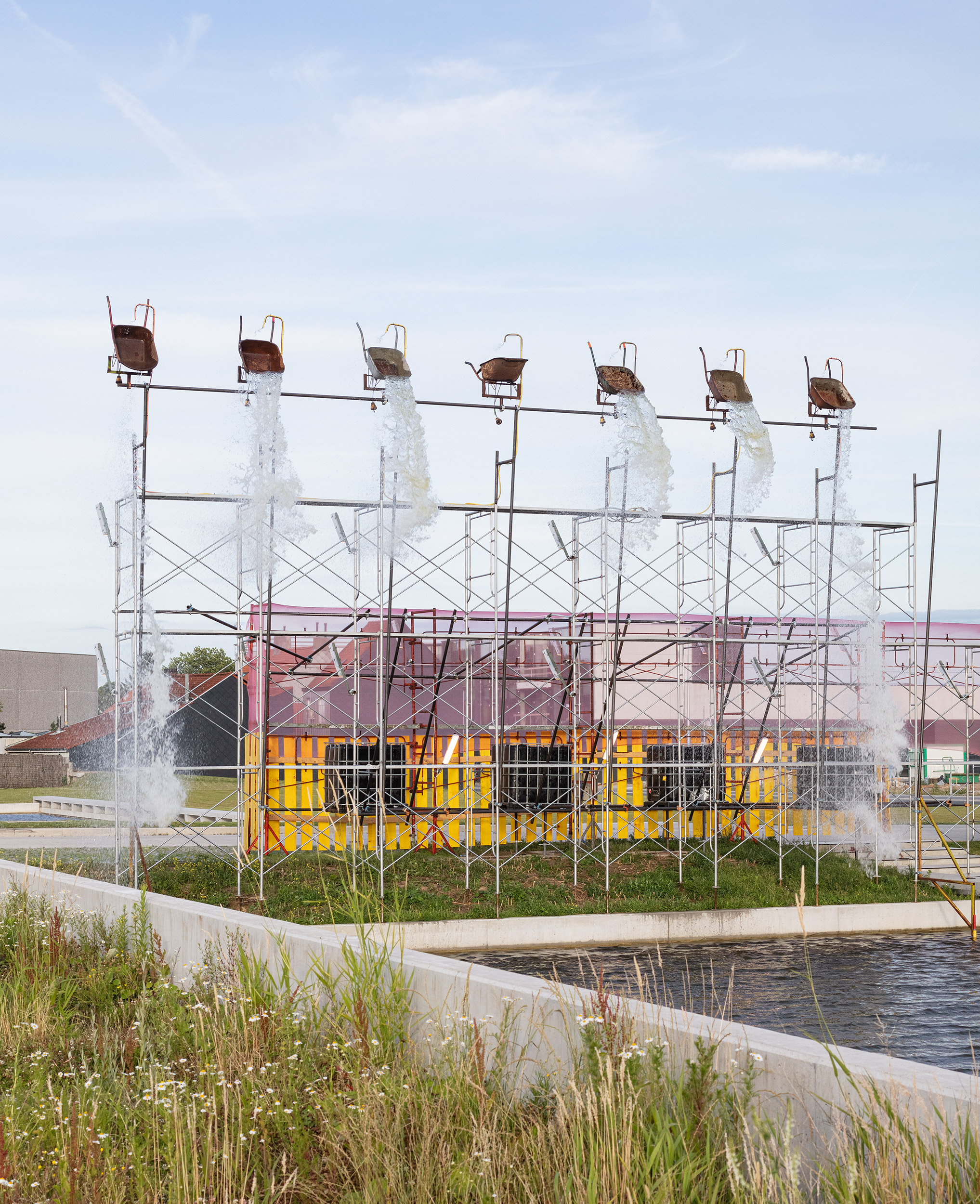

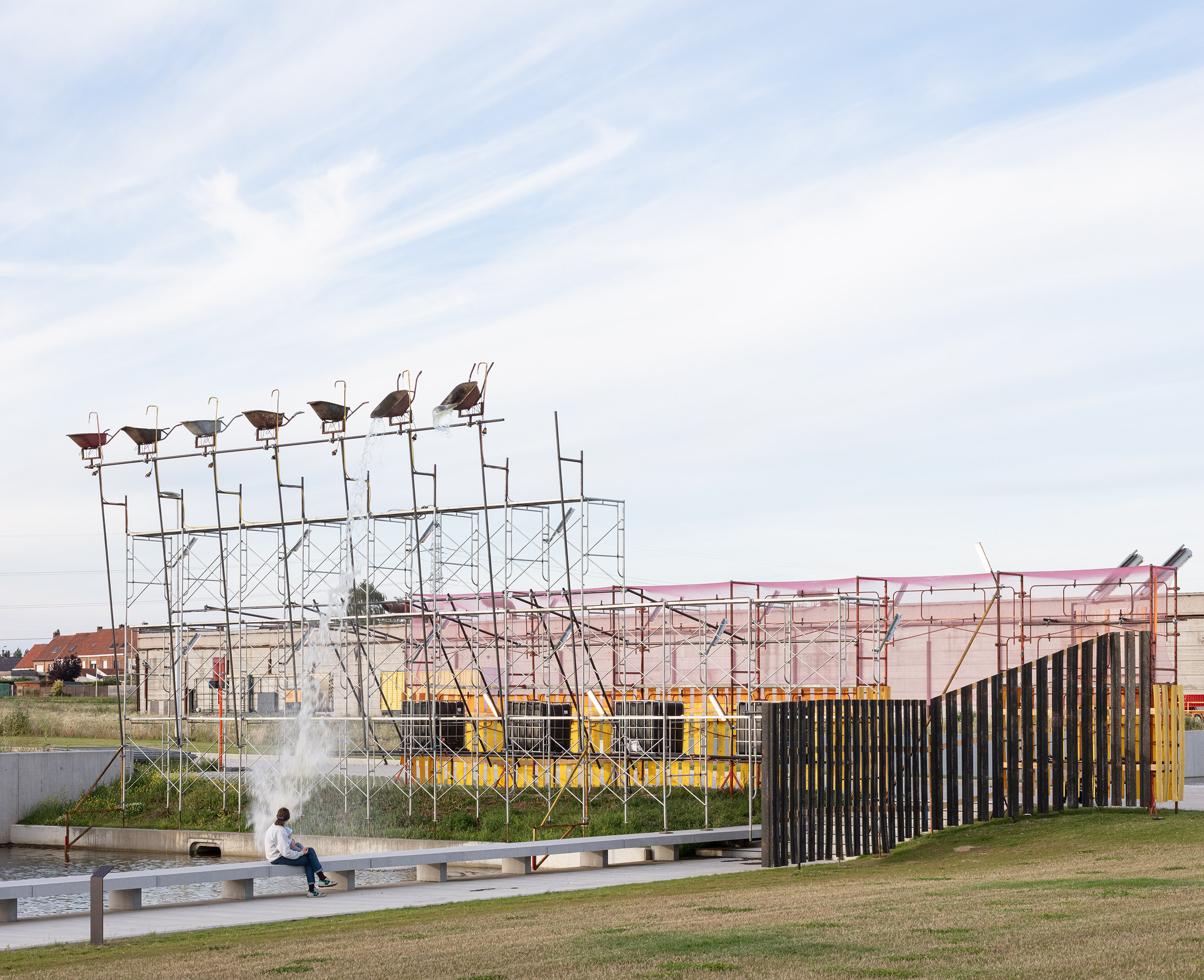
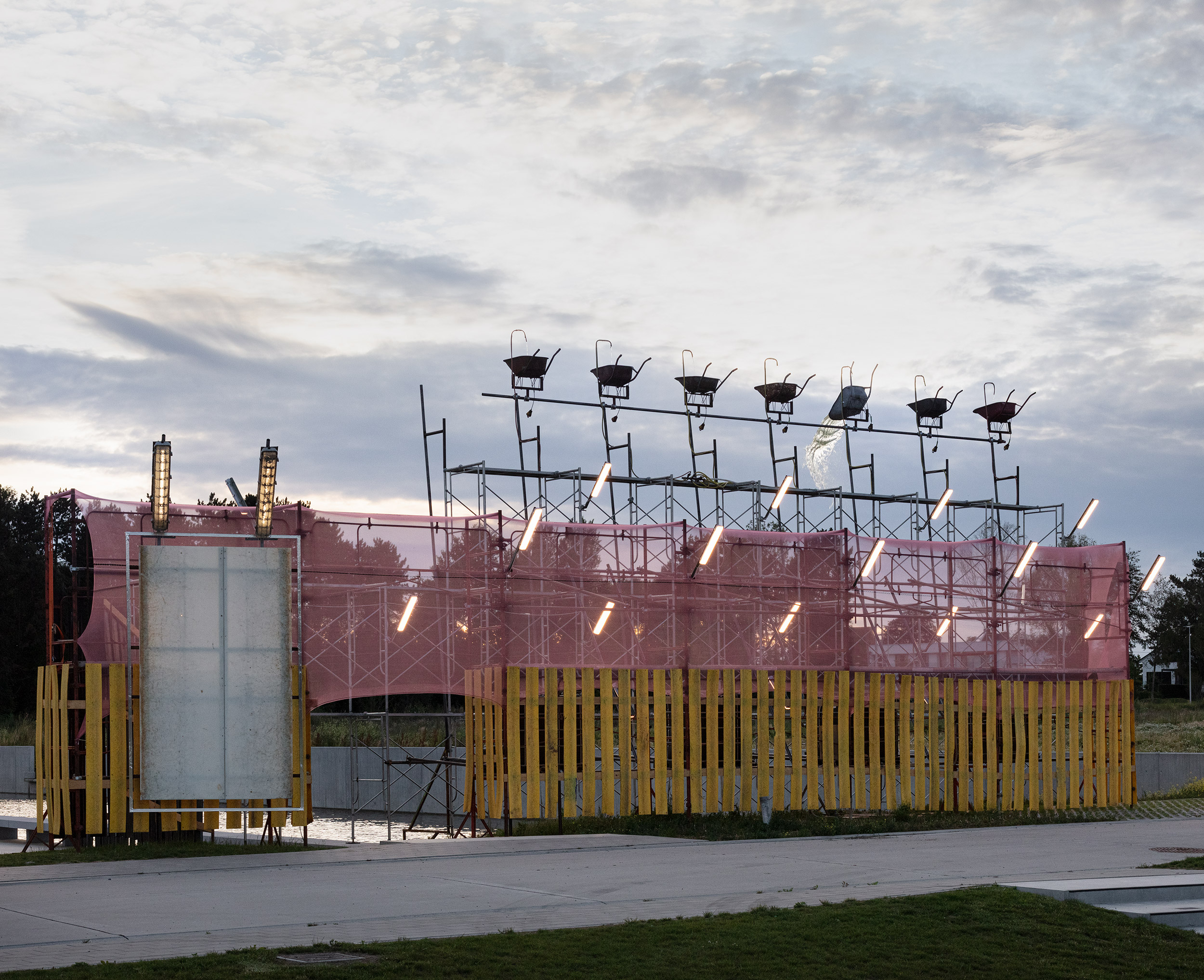
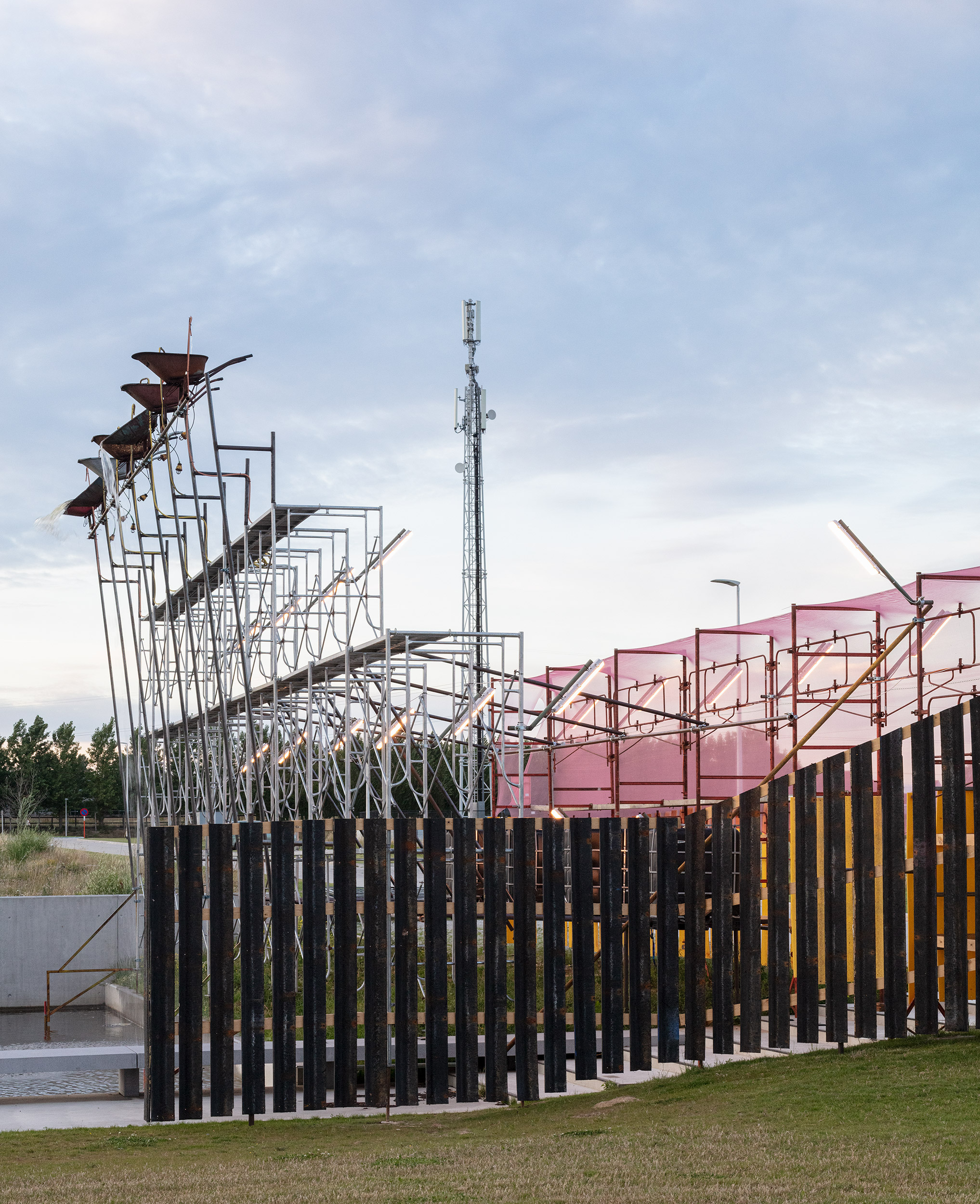
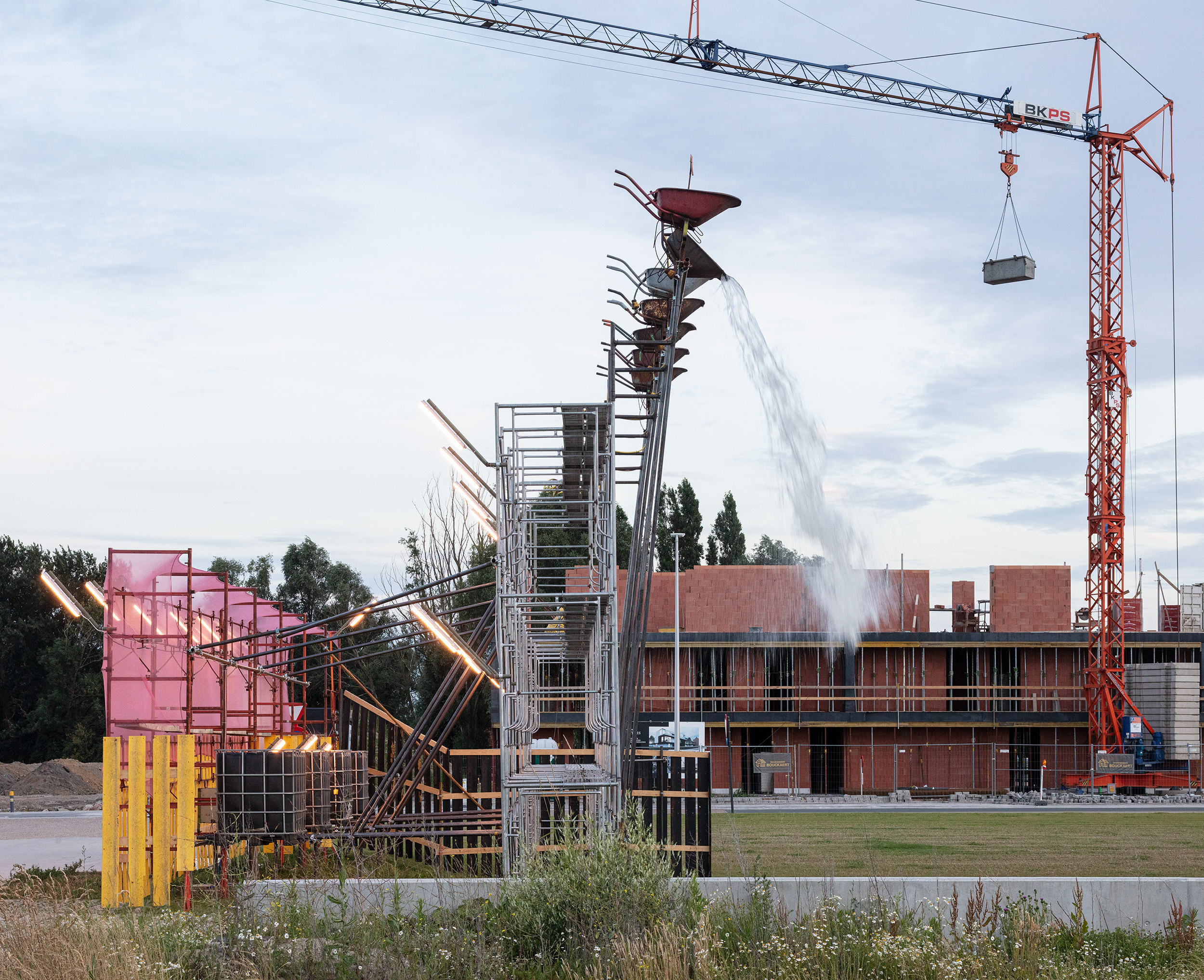
@WillemBoel, 2020
Content licensed to the European Union.